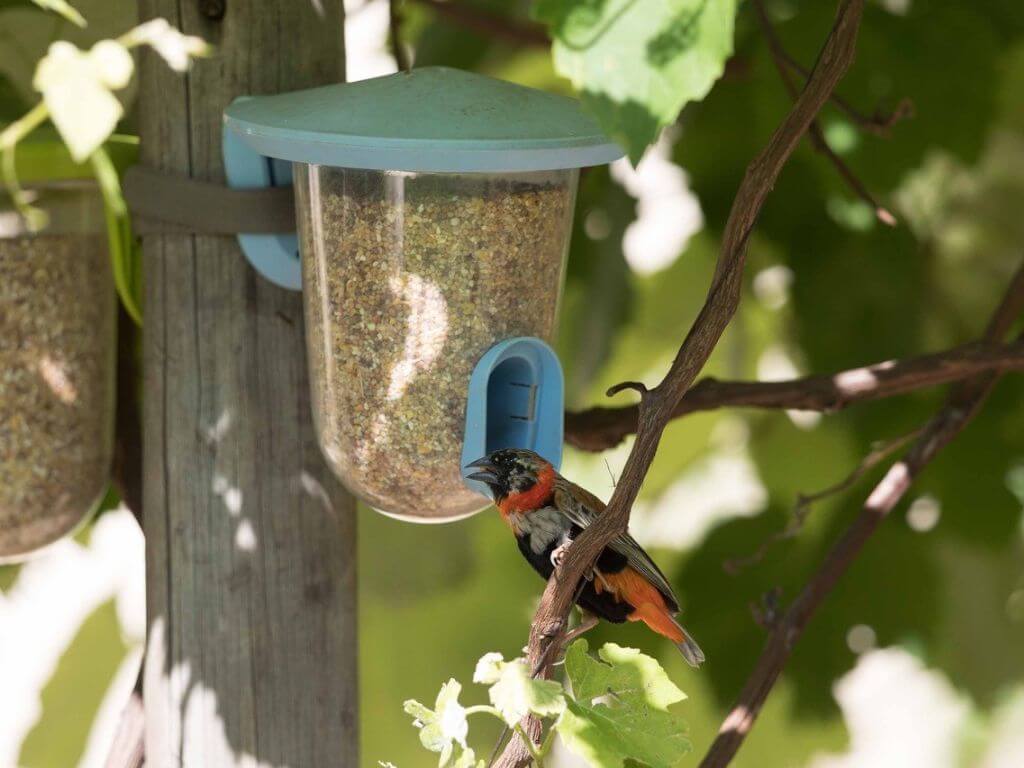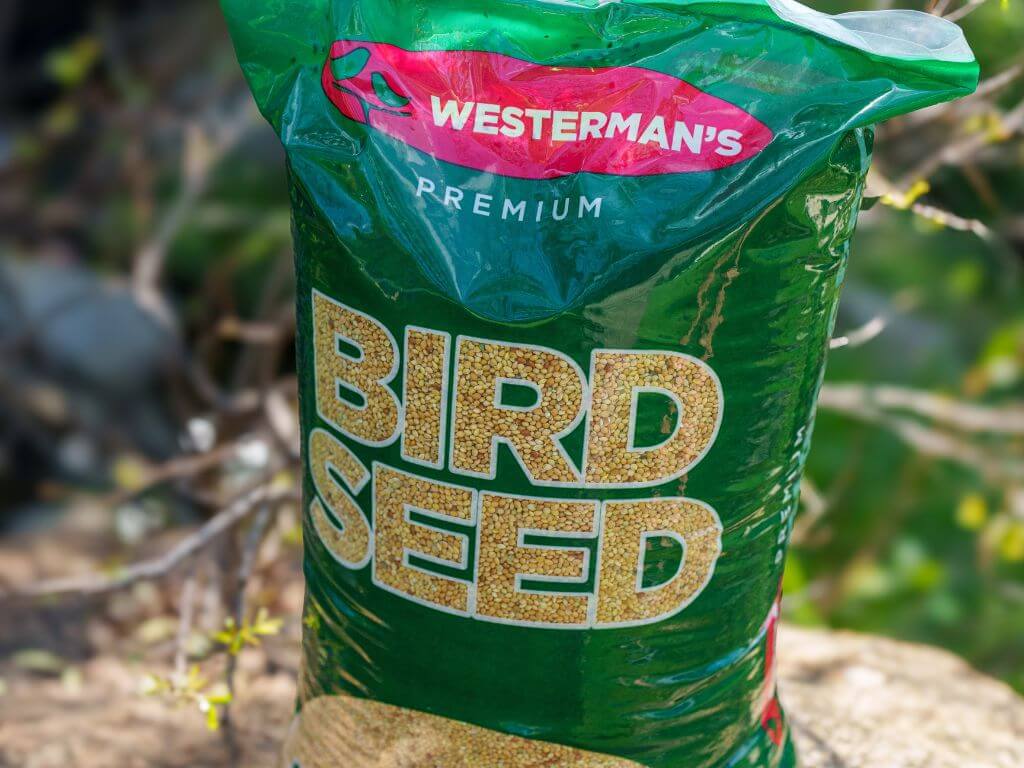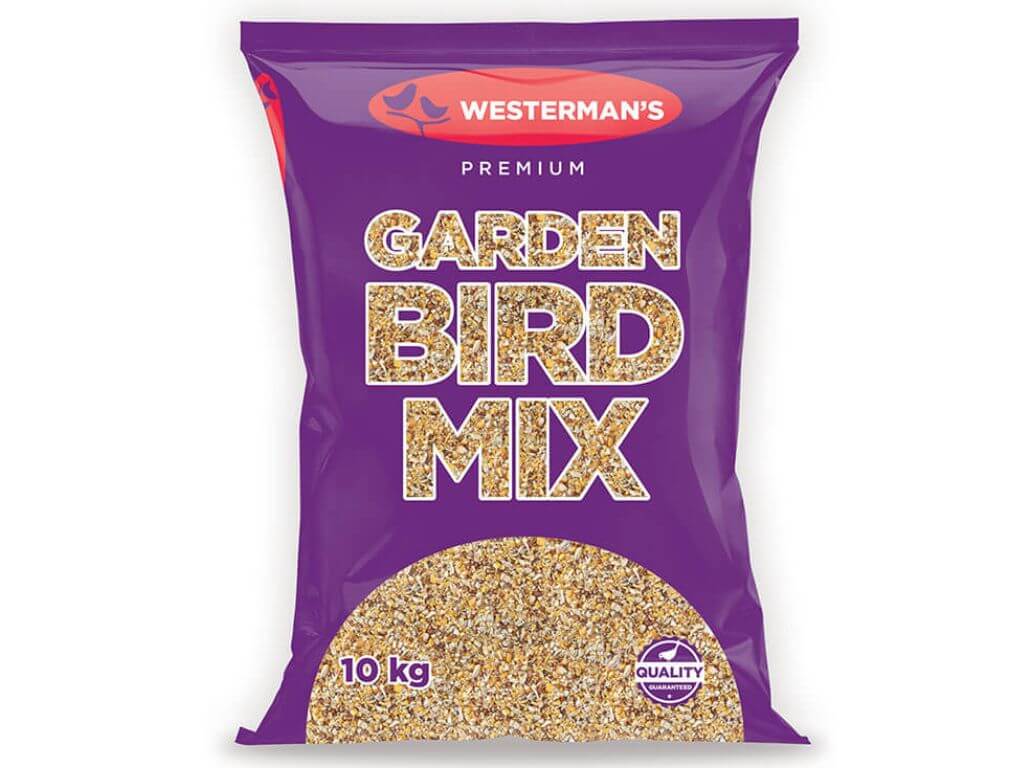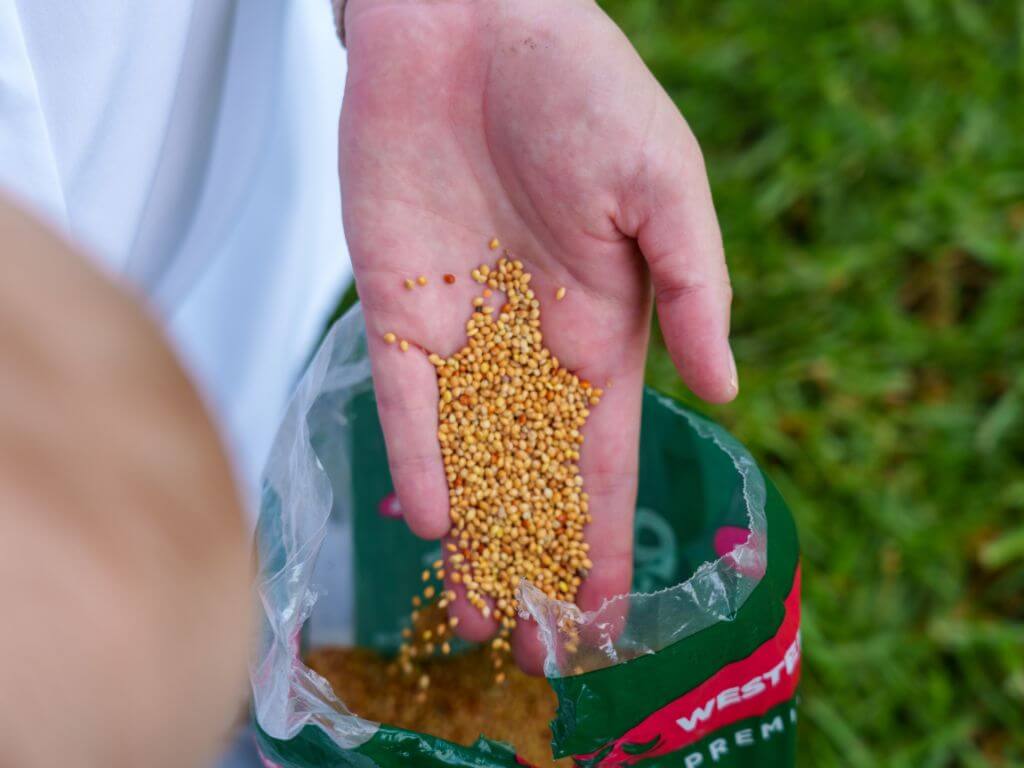If you’ve ever stood in the pet store aisle wondering which seed mix to choose, we’ve got you covered. In this blog, we break down the key differences between Westerman’s Mixed Bird Seed, Wild Bird Seed, and Garden Bird Seed so you can match the right mix to your birding goals, feeder setup, and garden visitors.
Understanding your birding goals
Whether you’re aiming to attract songbirds or just want a flurry of activity in the garden, it starts with choosing the right seed. The ingredients in your bird seed can help determine which species visit and how often they return.
Understanding your bird feeder goals means considering not only which species you want to attract, but also how you want them to interact in your garden. Some birders aim for variety, enjoying a mix of colours, sizes, and songs, while others focus on nurturing specific species. Think about whether you want ground feeders, perch feeders, or birds that forage in shrubs and trees, as your seed choice and feeder style can significantly influence who visits.

Westerman’s Mixed Bird Seed: Our millet-only premium mix
- Key ingredients: Yellow Millet & Red Millet
- Best for: Sparrows, finches, canaries, waxbills
- Why choose it: This is our most premium blend, featuring only millet with no maize. It’s ideal if you’re looking to avoid attracting pigeons. Millet is favoured by top-tier garden birds and works beautifully in both tray and tube feeders.

Westerman’s Wild Bird Seed: Balanced quality and variety
- Key ingredients: Yellow Millet, Red Millet, Red Sorghum & Fine Crushed Maize
- Best for: Finches, sparrows, blue jays, Cape White-eyes, weavers
- Why choose it: Our Wild Bird Seed offers a high-quality mix at a great price. It’s perfect for everyday feeding and attracts a broad range of wild birds. A solid all-rounder for those who enjoy variety at the feeder.
Seasonal tip: Try our Wild Bird Seed Winter Mix, a heartier seasonal blend with added Sorghum, Crushed Maize, Suet, and Soldier Fly Larvae. It’s ideal for winter-loving birds like robins, thrushes, and weavers.

Westerman’s Garden Bird Seed: A budget-friendly staple
- Key ingredients: Crushed Maize and Red Sorghum
- Best for: Doves, pigeons, and ground-feeding species
- Why choose it: This economical blend is perfect for larger feeders and open tray setups. With maize and sorghum included, it tends to attract less fussy birds in greater numbers.

How to choose the right seed for your garden
- Watch who visits first – Already seeing pigeons? Skip the maize-based mixes.
- Try a mix of feeders – Hanging feeders, trays, and suet cages help you cater to a variety of birds.
- Layer your feeding – Use premium millet to attract specialist birds, and support wider biodiversity with mixed blends.
- Match to your goals – Want beautiful songbirds or maximum activity? Choose based on which birds you hope to see.
- Use seasonal blends – In winter, boost energy-rich ingredients with our Wild Bird Seed Winter Mix.
- Think about placement – Position feeders where birds feel safe from predators and have nearby perches.
- Combine with suet – Suet feeders alongside seed feeders can bring in insect-eating species too.
Want to learn more? Read What type of feeder attracts the most birds?

Feeding for every birder and every budget
From the careful feeder who wants to avoid pigeons, to the birdwatching enthusiast aiming for variety, there’s a Westerman’s seed mix for you. Combine your seed choice with a good feeder, a water source, and some native plants, and you’ll have a thriving bird-friendly garden in no time.

Whether you are just starting out or have been feeding birds for years, the right seed mix can completely change the diversity and frequency of your visitors. Keep experimenting, keep learning, and most importantly, enjoy the activity and song that birds bring to your home.
At Westerman’s, feeding birds goes hand in hand with protecting them. That’s why we’ve stepped in to support the Botha’s Lark Project, which works to safeguard South Africa’s most endangered grassland bird and the fragile ecosystem they depend on. Thanks to this work, there have already been confirmed sightings at four locations (the first verified records in over 18 months!), along with rare glimpses of breeding success. We’re proud to play a small part in ensuring that rare species like Botha’s Lark, as well as the garden visitors you know and love, are here for years to come.
Explore our full range of wild bird seed, suet and bells, and feeders. Follow us on Facebook and Instagram for daily birding inspiration.